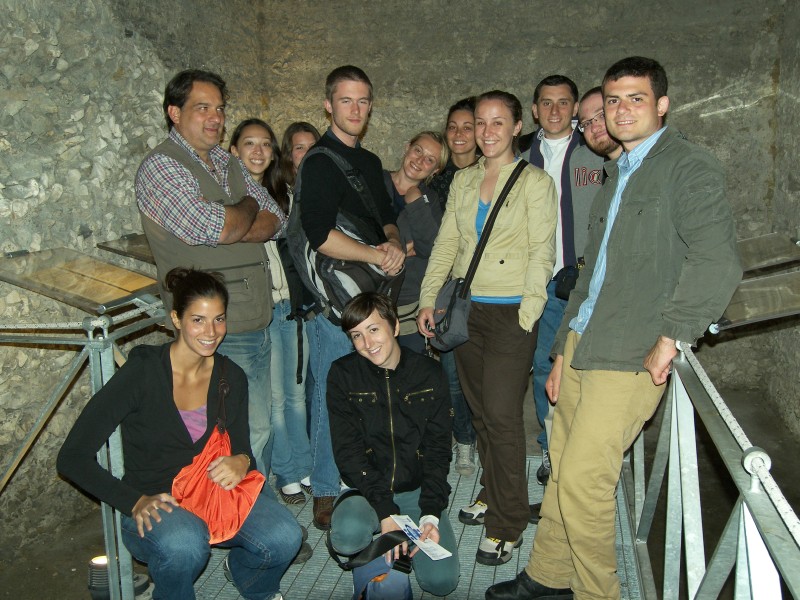Up late last night tracking down the identity of one of our tiny coins from last season. It's about 1.5cm in diameter, made of silver, and was originally a bit too dirty to read well, but thanks to the restorers at the museum in Perugia, it was cleaned late in the summer and I got to photograph it in September, when I was around for the
conference.
So here it is with only very minor cleaning to get off the easiest dirt:

You can clearly make out the profile of a head looking right on the obverse (left) with some writing behind it ("III V..."?), and some pretty shapeless blobby thing on the reverse (right) with maybe some letter, an "M"?, to the left. A surrounding circle of dots can pretty easily be filled in for both sides.
Now here it is cleaned:

You can pretty well see that the head on the obverse has some kind of covering on its back half, while "III V..." is clearer and calls to mind the standard abbreviation for "triumvir": "III Vir." The reverse is still a bit unclear, though now the lettering to the left very clearly spells out "M. ANT" for M[arcus] Ant[onius], good ol' Marc Antony. You can also barely see some letters on the right and something vertical in the middle there, rising above the central blob.
So we've got a small silver coin dating to the period of the Second Triumvirate, which is therefore the oldest datable coin we found. And it's pretty easily findable on-line. I'll give the
American Numismatic Society's record here, because they've got a nice standard way to refer to coins in their collection (which is on-line and searchable), thanks to fellow UMich alum Sebastian Heath, who is their Research Scientist in charge of such things.
Their description of our quinarius is:
obverse type: Concordia head r., wearing diadem and veil
obverse legend: III.VIR.R.P.C
reverse type: Two hands clasped around caduceus
reverse legend: M.ANTON C.CAESAR
And here's their image:











 Meanwhile, here's a screen shot from Google Earth. I got hungry and went to get some hot-and-sour soup (gratuitous unnecessary personal information, just like a real blog!), and took along the GPS unit. You can see that my path isn't perfectly mapped - I didn't stagger all over the street on my way there - but it isn't bad either. (Click on it to download the Google Earth file.)
Meanwhile, here's a screen shot from Google Earth. I got hungry and went to get some hot-and-sour soup (gratuitous unnecessary personal information, just like a real blog!), and took along the GPS unit. You can see that my path isn't perfectly mapped - I didn't stagger all over the street on my way there - but it isn't bad either. (Click on it to download the Google Earth file.)